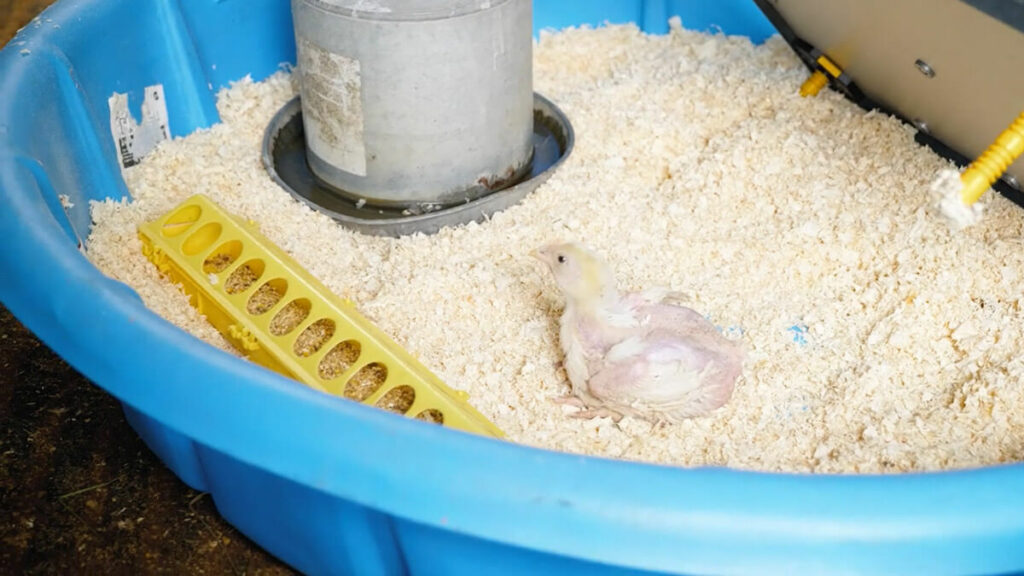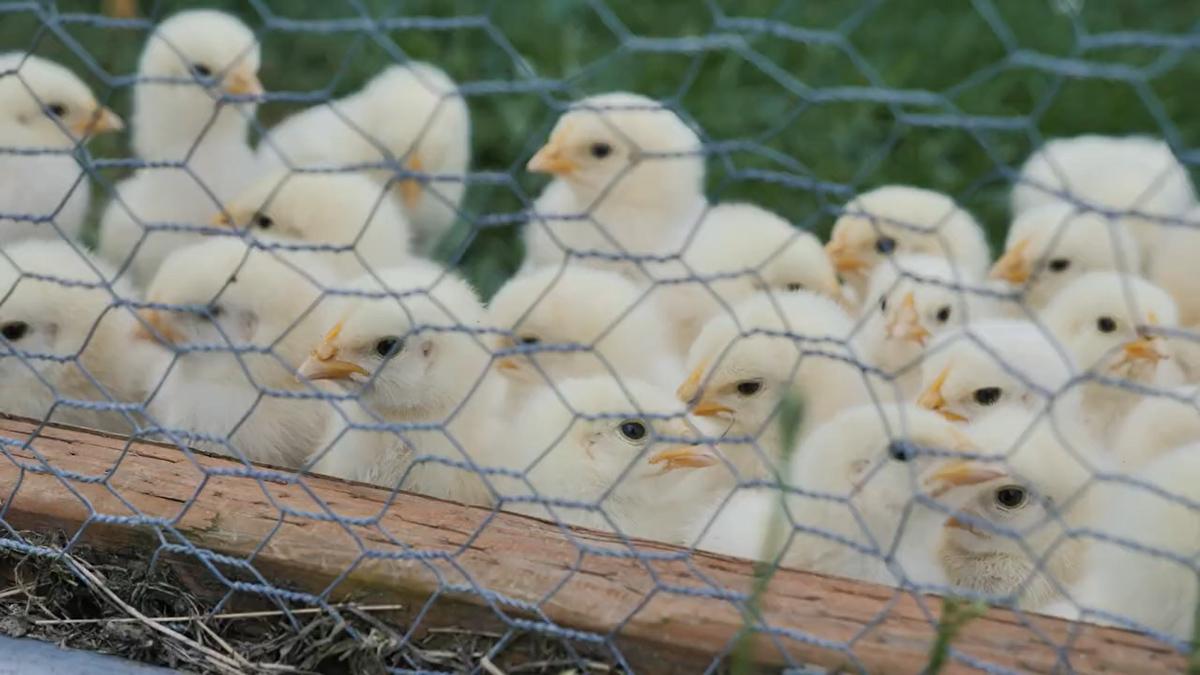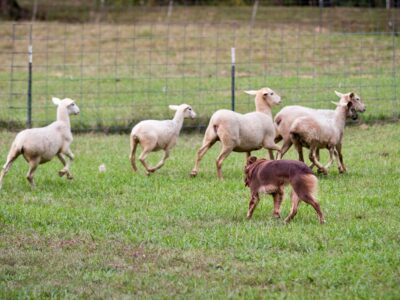Are you ready to slash the cost of groceries and enjoy filling your freezer with delicious organic meat? One of the best ways to do this is by raising meat chickens. Oftentimes people have a bad experience because they don't understand how the care of meat birds differs from heritage meat birds or backyard egg-laying hens.
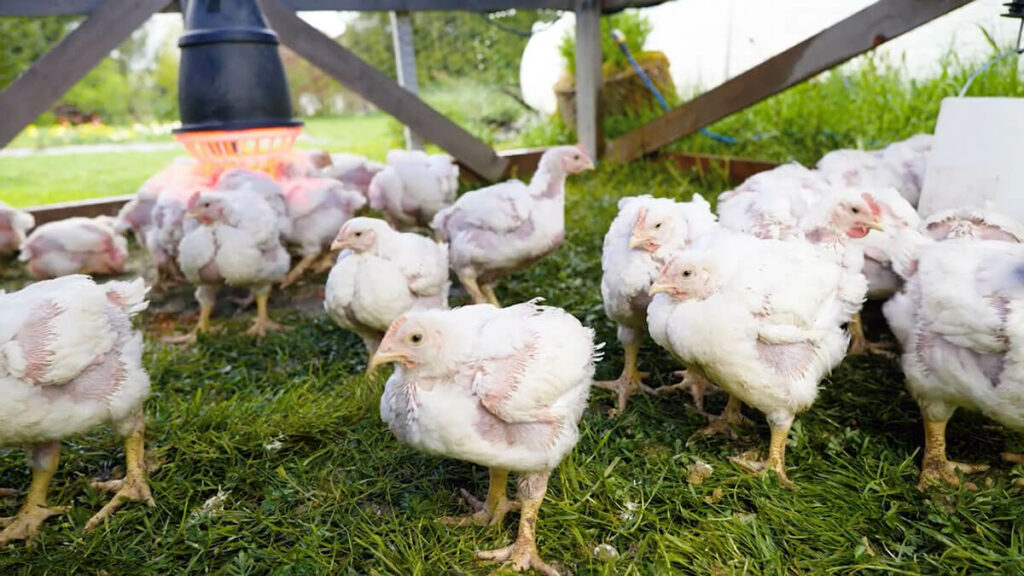
No worries, I'll lay it all out for you in this guide! We’ll cover everything you need to know, including equipment, space requirements, breeds, feed, shelter, and more!
This post was originally published with Podcast Episode #30, Raising Meat Birds, of the Pioneering Today Podcast. It has since been updated to include additional tips for raising meat chickens from episode #256, Tips for Raising Meat Birds.
You can now check out all the information in one place and listen to the Pioneering Today Podcast episodes below, where we don’t just inspire you but give you the clear steps to create the homegrown garden, pantry, kitchen, and life you want for your family and homestead.
Why You Should Start Raising Meat Chickens
Chickens are often referred to as the “gateway farm animal” for homesteaders. The initial setup and time investment are relatively minimal, and the returns are huge.
As you become more and more comfortable raising meat chickens, you have the option to layer on additional skills like raising chickens for profit, using chickens in the garden, breeding chickens naturally (don’t miss the step of integrating new chicks into existing flocks!), treating common poultry diseases at home, and butchering chickens yourself.
Even if you didn’t choose to reap these benefits, having access to hormone and chemical-free meat, reducing your reliance on the grocery store, and saving money are all excellent reasons to get started.
This post is sponsored in part by Premier 1 Supplies. All information and opinions are my own.
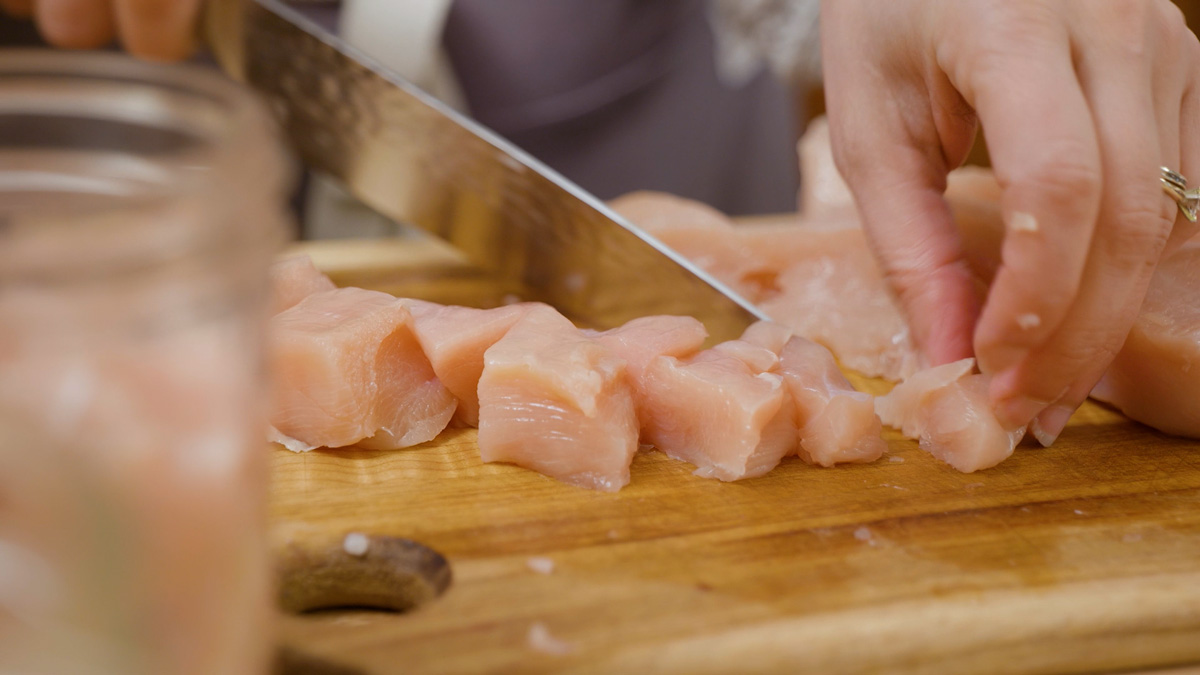
The Best Chicken Breeds for Meat
There are two camps when it comes to meat chickens. Some swear by heritage or dual-purpose breed, and others raise what we consider meat bird breeds, like Cornish X or White Cornish broilers.

Hybrid Meat Breeds
Meat birds are ready to butcher at just eight to ten weeks of age. It’s important to note that hybrid chickens are NOT Frankenstein chickens. I often hear people refer to them as such, and it drives me a little bit crazy because it's false information.
I'm all about staying away from genetically modified foods, but there's a very big difference between GMO and hybrid breeding, both with our garden seeds as well as animals. A hybrid meat chicken simply means they've been specifically bred to come to weight really fast for meat purposes.
The advantage is that you're not feeding them as long, which means less feed costs. You have a full-size bird that can be butchered much faster. This also means you don't have to take care of them over a longer period of time.
We prefer to get Cornish Cross for raising meat chickens because at full butchering weight (after 8 weeks), they average 5-6 pounds each. This means you're getting a great source of protein to feed your family, but you can also put your meat birds to work!
They are phenomenal when allowed into a fall garden to do your “clean up.” As they eat away any remaining produce, they'll leave behind their droppings, which will break down over the winter and fertilize next year's garden.
Several breeds have “Cornish” in the name, so here is a brief breakdown of the differences.
- Jumbo Cornish Cross (aka Jumbo Cornish X Rock) – This breed is my top pick for a hybrid meat chicken. It’s a cross between the regular Cornish chicken and a White Rock chicken. They have been bred because they have really large breasts…there's a lot of meat, and they come to weight really fast. Males will dress out at three to four pounds in six to eight weeks. Females take about a week and a half longer to reach that same size. Dressed out is when they have been butchered, gutted, and feathers removed. I like my whole birds when they're dressed out to weigh between five to eight pounds (our Jumbo Cornish Cross from McMurray averaged 5 to 6 lbs at eight weeks old.)
- Cornish Roaster – The Cornish Roaster takes longer to mature than the Jumbo Cornish Cross but they have large breasts, big thighs, and yellow skin. They're a bit slower on growth so that can help with potential leg problems that you can have with Jumbo Cornish Cross.
- Cornish Game Hen – The Cornish Game Hens are much smaller with a live weight around two and a half pounds. I bring them up because they have that Cornish name and people get confused.
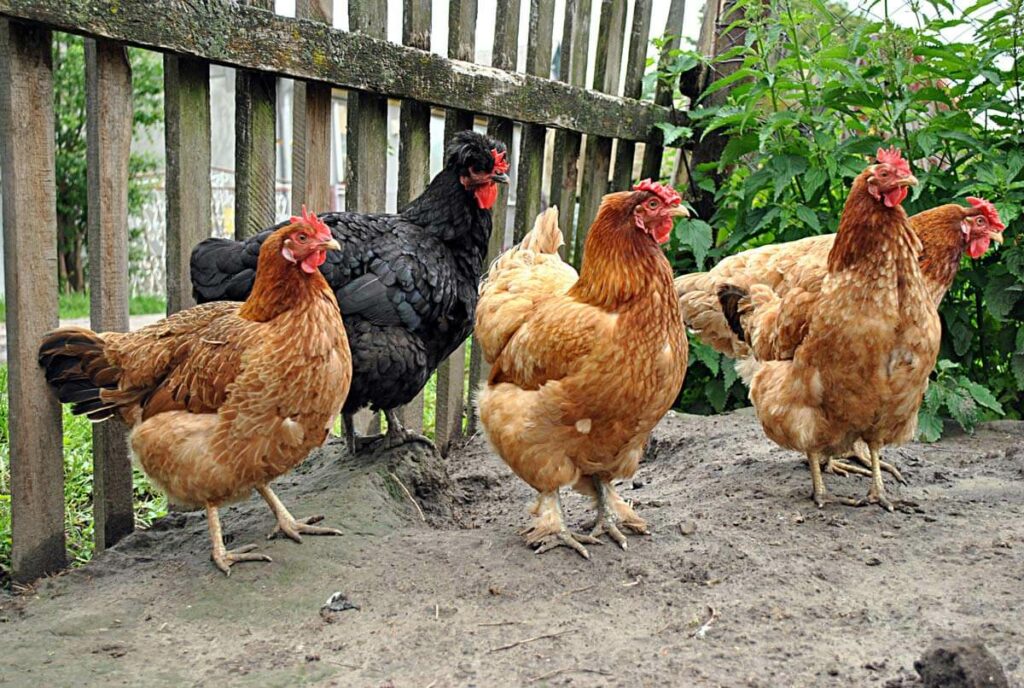
Dual Purpose Breeds
Dual-purpose breed chickens take longer to raise, resulting in a higher cost on feed, and an older bird by the time they're ready to butcher.
However, when raising meat chickens, they are easier to come by, and if you decide you want to breed your own chickens going forward without having to get hybrids, they can be a really great option. You can butcher some when they get to size and the rest you can let mature and become egg layers.
If dual-purpose breeds are more suitable to your needs, look for these breeds:
- Buff Orpington
- Barred Rock (aka Barred Plymouth Rocks)
- Buff Rock
- Black Giant
- White Jersey Giant
- Wyandottes
- Delaware Broiler
- Ginger Broiler
- Murray's Big Red Broiler
- New Hampshire
- Sussex
- Red Rangers
- Rhode Island Reds
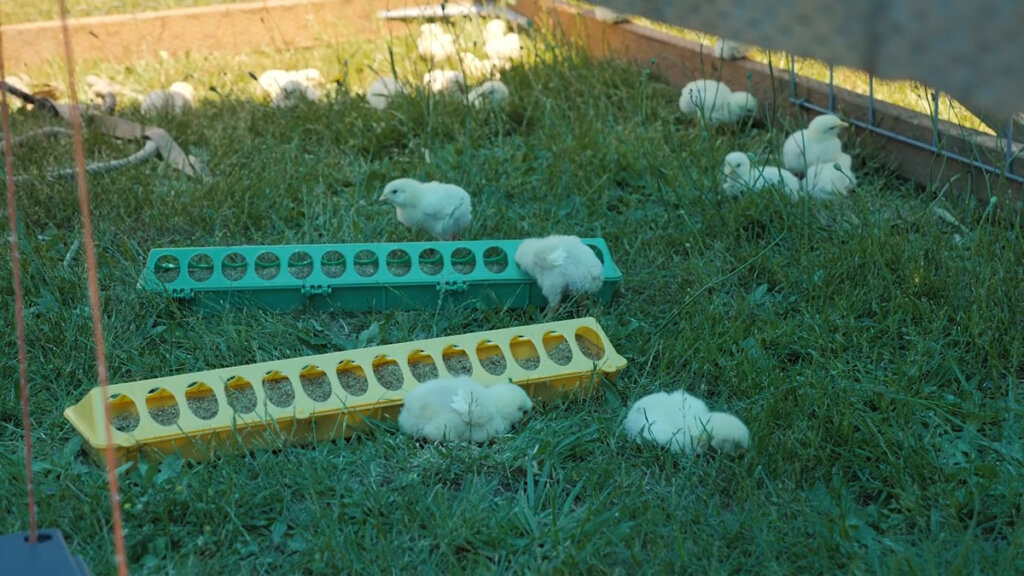
How Many Meat Birds Do You Need
When you order online through a mail-order hatchery, there are minimums because there must be so many day-old chicks in the box to retain their body heat during the shipping process. We usually get 25 at a time but you can get them in smaller batches.
With getting 25 we figured that's two whole birds a month. You may or may not eat more chicken than that. Because we also raise our own beef and pork, fish for salmon and go crabbing, we feel that this is a good number for our family.
If you don't have a way to protect your flock, you may be interested in learning more about livestock guardian dogs or herding dogs. You can learn about that in this post (and podcast interview) on farm dog breeds.
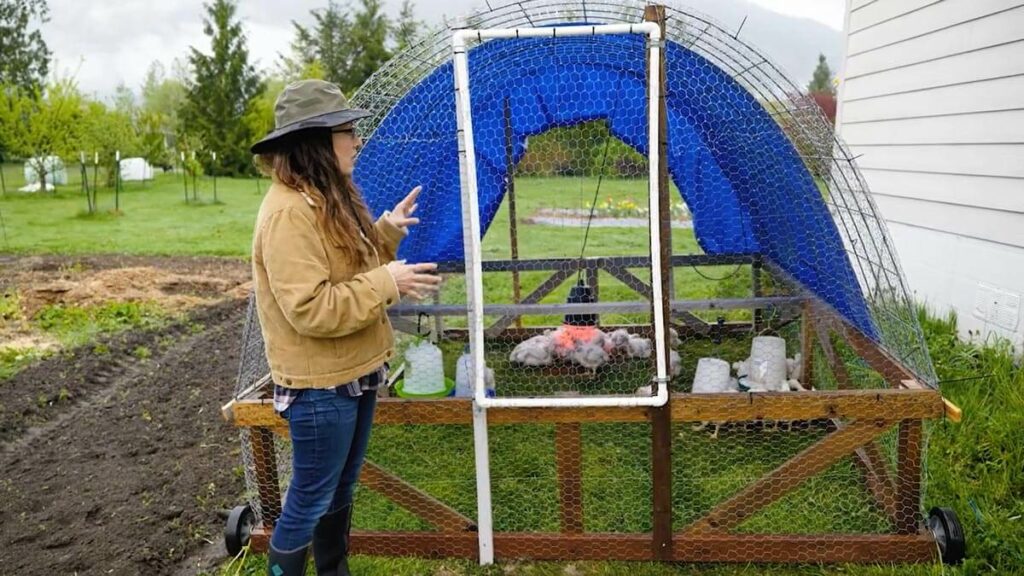
Caring for Meat Birds
I have an entire blog post dedicated to teaching how to care for meat chicks from the time you bring them home for the first six weeks, so if you aren’t familiar with caring for chicks, review that information first.
After you get through the first six weeks, you don't need anything too fancy to raise meat chickens. Here are the basics to consider.
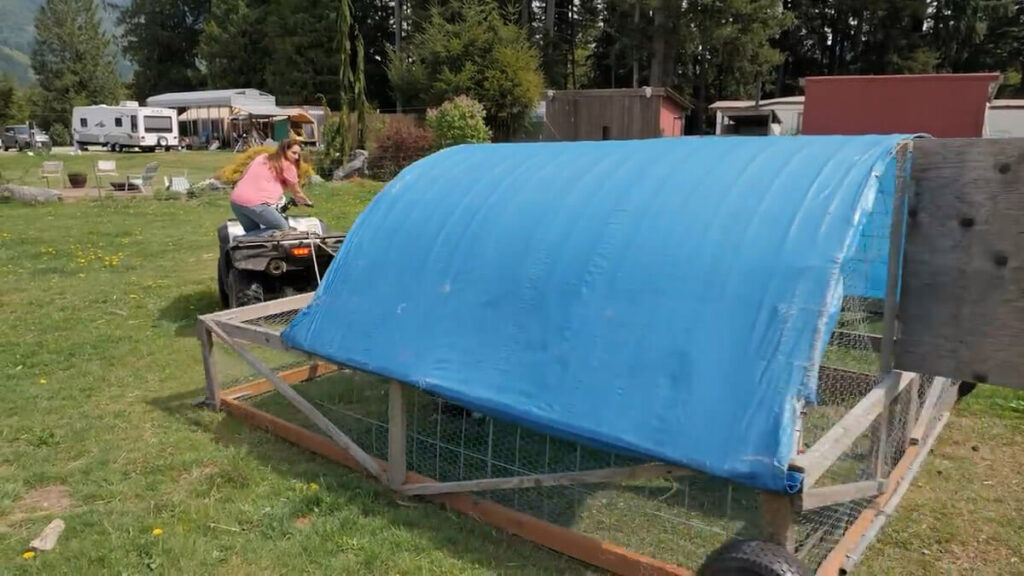
Space Requirements
Before purchasing meat chicks, it's important to have their space planned out ahead of time.
Meat birds lay around a lot. Their bodies are larger, and as they grow, they can't stay standing for long periods of time. Their feathers are slower to come in, and they have light skin, so be sure the location you choose provides shade.
Rest assured, you do not need a lot of land to raise meat chickens. If you do have land and other livestock available, you can utilize rotational grazing practices to reduce your feed bill because the chickens will be able to peck and scratch for bugs, but again, that’s not mandatory.
Each bird will require approximately 2 square feet per bird. This can be less when they're small, but as they reach full size, this is the average amount per bird when raising healthy chickens.
Don't stuff your birds into a tiny living area. Be sure they have room to move about. If they can run around on pasture, that is best. If not, be sure there's enough space for them to spread out and you keep it clean.
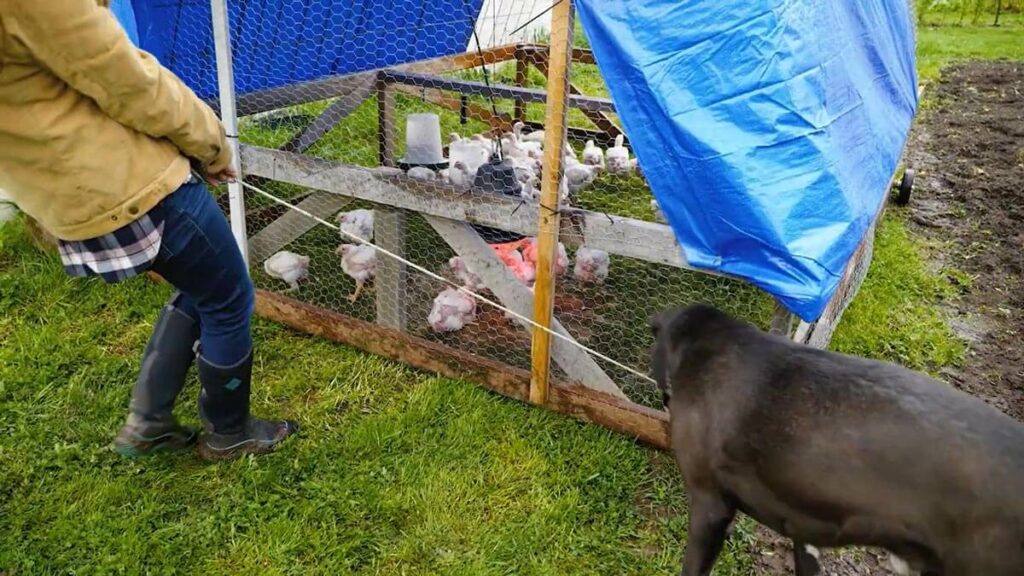
Shelter
Because raising meat birds is a relatively short-term project, the most popular shelter option is a portable chicken tractor, which will need to be moved once per day.
As mentioned above, this can be extremely beneficial for the homesteader by reducing the feed cost and fly population, but it is also great for the home gardener. Chicken poop is extremely high in nitrogen which is great for crop growth.
If used in large amounts, chicken poop cannot be “hot” or fresh when applied to plants as it will actually burn the roots of the plants. But in small increments or while the meat chickens are free-ranging in a pasture, this small amount is extremely beneficial both for the garden and pasture.
One year, we had 44 meat chickens, and they all started out (after the brooder) in one chicken tractor that was partially covered with a tarp. This allows them to be out of the elements or get sunshine as needed. When the chickens got a little larger, we divided them in half into two chicken tractors so they had adequate space to move around.
If predators are a concern for your free-range chickens, you may want to consider electric fence netting.
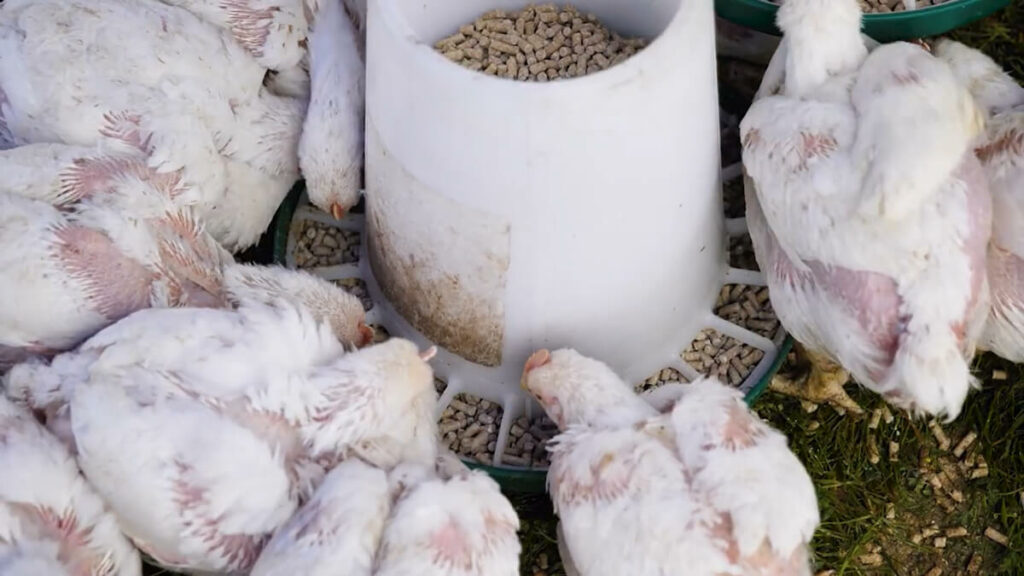
Feed and Water
Because they do not move around a lot, meat birds need their feed and water close by. If you let them out into a run or pasture, keep food and water in the coop and where they're ranging.
You want to make sure, especially with meat birds, that they have ample protein. Because they're growing so fast, this is a must. We feed them a meat bird formulation of chicken feed to ensure they're getting adequate growth.
If you're used to raising regular laying hens, be prepared to feed much more often and a lot more feed. According to University of Kentucky Agriculture Extension Office a flock of 25 meat birds weighing 5 pounds at butcher time will go through 5 fifty-pound bags of feed.
Our hens will go through their feed in about four days. The meat chickens will go through the same amount in about a day. Granted, we had about twice as many meat chickens, but they were young and not full-grown.
To help them not get too big too fast (causing health issues), you have to take their feed away at night. I put their feed out in the morning, usually around 7 AM, and then I go out at around 8 PM and take it away.
I can get organic very freshly milled feed from a near by granary, and we choose to feed unmedicated organic meat bird feed, which is between 20 and 24% protein.
Pro-Tip: For tips on keeping feed costs down, check out Stocking Up on Animal Feed (+ How Much to Feed Animals.)
Just like their feed, they go through a lot more water. Be sure they have plenty of freshwater in their pen, and keep it topped off at all times.
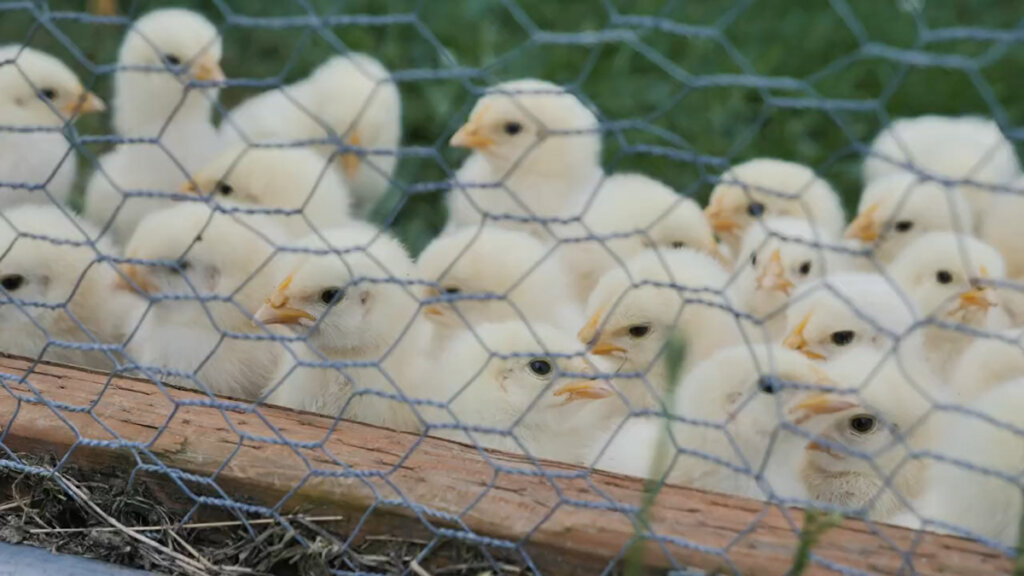
Where to Buy Meat Chicks
For multiple years now, we have purchased our meat chicks from Murray McMurray Hatchery. They have the best viability, and we haven't had nearly the number of deaths compared to when we had used other hatcheries.
We also like to get all of our meat chicken supplies (such as heat lamps, heat plates, feeders, waterers, etc.) from Premier 1 Supplies.

How Long Do You Raise Meat Chickens?
If you're raising male meat birds, it only takes eight weeks from when the chicks arrive to harvest. For female meat birds, they take ten weeks to get to full processing weight.
Whether male or female, eight to ten weeks is a pretty fast turnaround and will require much less overhead feed cost compared to raising pigs or beef cattle.
Bear in mind that you don't want to push the meat birds much beyond this 8-10 week mark (depending on the gender of the bird); if you go much beyond a week from this time period, you risk losing birds due to stress or other issues.
So, having your butchering process figured out ahead of time is important.
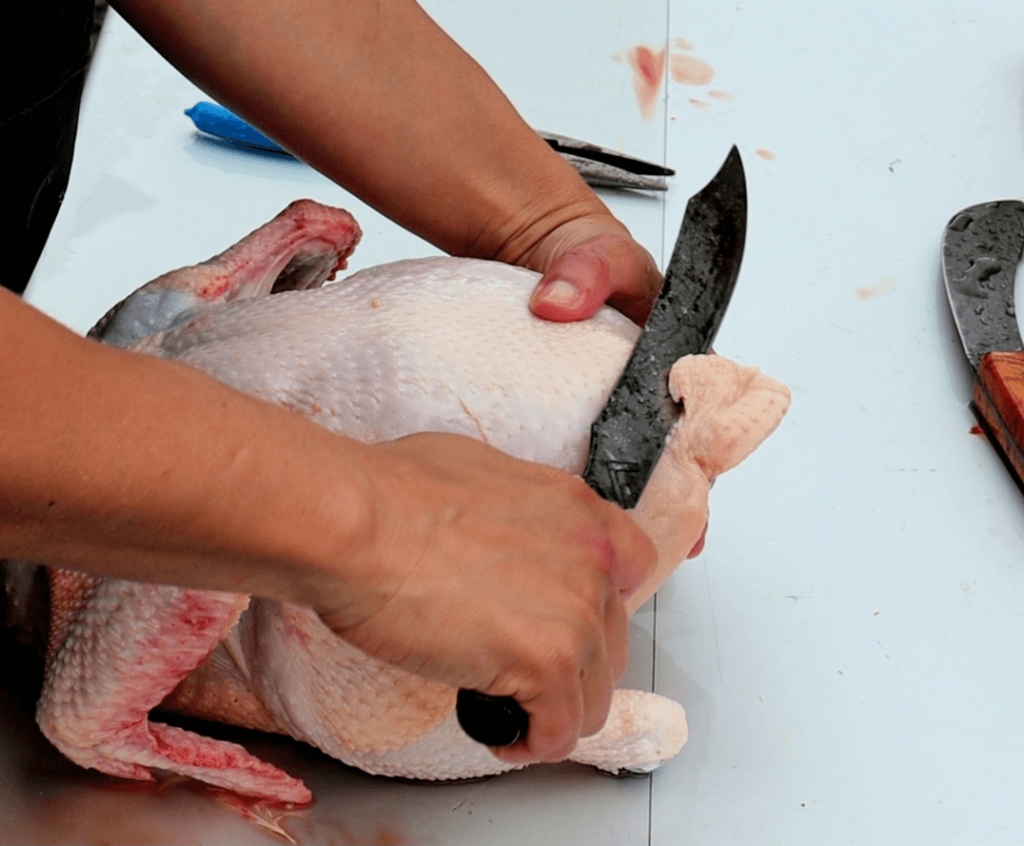
Butchering Meat Chickens
When it comes to the butchering process, there are two options to consider.
- Butchering Yourself – For the most cost savings, it's ideal to be able to butcher the chickens yourself. I have an entire tutorial on how to butcher meat chickens at home. That post walks you through the entire process.
- Hiring a Butcher – There are also options for mobile butchering operations that will come to you and butcher all your chickens, then take them back to the butcher shop for processing. Some mobile butchering operations actually bring all the equipment needed for processing with them and will butcher, process, and wrap your birds onsite. They usually have a per-bird fee for this service.
You can also look into renting butchering equipment if you happen to a place close by that offers that.

Preparing for Butchering Day
Mark the calendar! Clear your schedule for butchering day (or a couple of days, depending on how many birds you commit to), and make an appointment with a butcher. Alternatively, make sure you have equipment ready to do it yourself.
If you are ready to commit to several butchering seasons, you may want to invest in your own equipment. Make sure you order everything you need and get it on its way.
You can also rent equipment. Many county extension offices have chicken butchering equipment for rent, but you have to reserve it in advance. Be sure you book it in advance for your set time frame. It only costs us $25 to rent the equipment, and we get to keep it for 48 hours.
You can also ask neighbors or other homesteaders you know who are raising their own meat chickens. They're usually happy to share in the cost of renting or barter the use of their equipment.
We recently did this by loaning out our wood splitter in return for a chicken plucker from a neighbor of ours, promoting building community sufficiency vs. self-sufficiency.
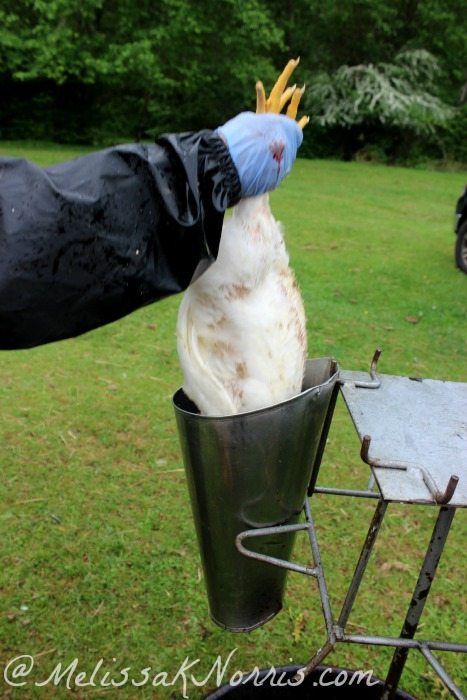
When to Butcher Your Chickens
You do not want to let your Cornish Cross mature to the age where they could begin laying eggs. They are not dual-purpose and you need to butcher them between eight to ten weeks. Occasionally, you can push it to eleven or twelve weeks, but then you're really pushing it.
Remember, they've specifically been bred to grow so fast, and they're heavy eaters. Pushing beyond the ideal butchering window can result in leg and organ failure, causing unnecessary suffering. If you choose a Cornish breed as a meat bird, you need to commit to butchering at the necessary time.
As homesteaders, we take very good care of our livestock and butcher them humanely, keeping them as comfortable and calm as possible.
Additionally, anytime we're raising animals for food, we don't think of them as pets, and our children know upfront the animals are for food. We don't lie, fib, or try to hide the fact. Our children are very well adjusted to the fact we raise our own food, making us and them ready for butchering day.
FAQ’s
What are the best meat chicken breeds for backyard farming?
My top choice for meat chickens is Cornish Cross. These breeds grow fast, produce a lot of meat, and adapt well to different environments.
How long does it take to raise meat chickens?
Meat chickens, or broilers, can reach processing weight in as soon as 6-8 weeks, but full weight is between 8-10 weeks.
How much does it cost to raise meat chickens?
Raising meat chickens costs vary based on initial set up costs, feed, housing, and health care. Buying in bulk and local feed can lower costs.
Where can I buy day-old meat chicks?
You can buy day-old meat chicks from hatcheries, feed stores, or online. We purchase ours online from Murray McMurray Hatchery.
How do I create the perfect meat chicken shelter?
A good meat chicken shelter provides shade, protects from weather, has enough space, and easy access to food and water. Use a chicken tractor or coop that's safe, well-ventilated, and supports free-range or pasture feeding.
What should I feed my meat chickens for optimal growth?
Meat chickens need a diet rich in protein, energy, and nutrients. Use a commercial broiler feed for rapid growth. You can also add grains, veggies, and other quality ingredients for a nutritious and affordable diet.
How do I prevent and manage health issues in my meat chickens?
Keep the area clean, provide a stress-free environment, and have a health care plan. This includes parasite control and watching for respiratory problems or diseases.
When is the best time to butcher my meat chickens?
Butchering meat chickens is best between 8-10 weeks old when they reach the right weight. Follow humane slaughter methods and local laws for a safe, ethical process.
What are the economic benefits of raising meat chickens?
Raising meat chickens can save money and provide high-quality, organic protein. It's a cost-effective way to control the quality and source of your meat.
Resources
- McMurray Hatchery
- Heat Lamps
- Heat Plates
- How to Butcher a Chicken at Home
- Our Food Production Plan & How to Plan for Livestock
- Raising Baby Chicks – Beginners Guide for the First 6 Weeks
